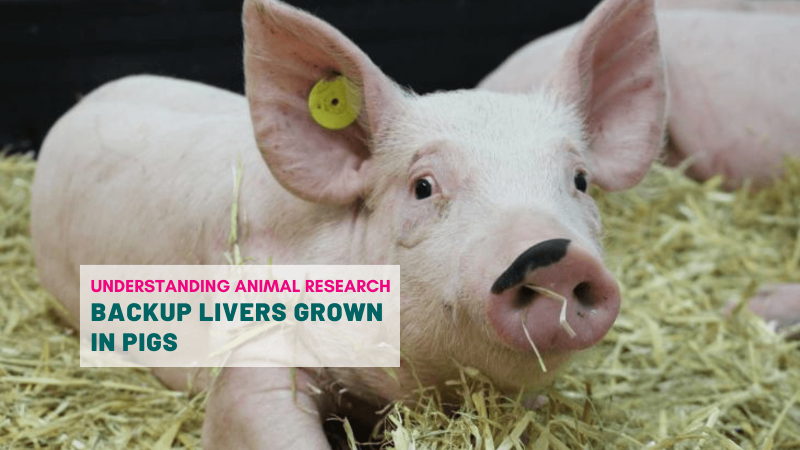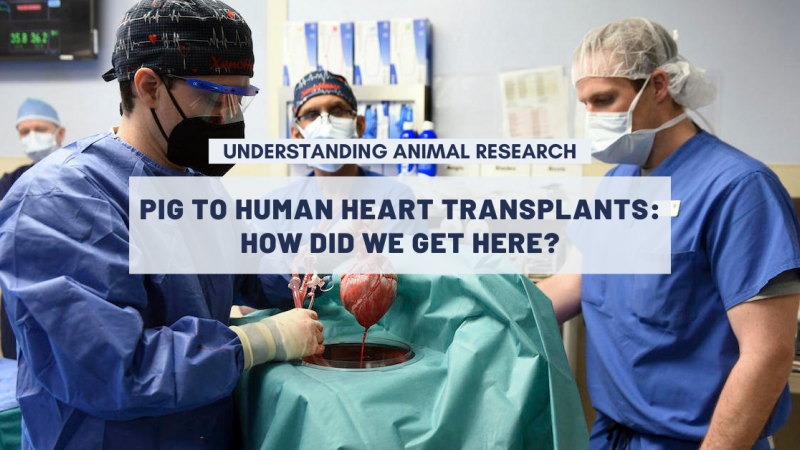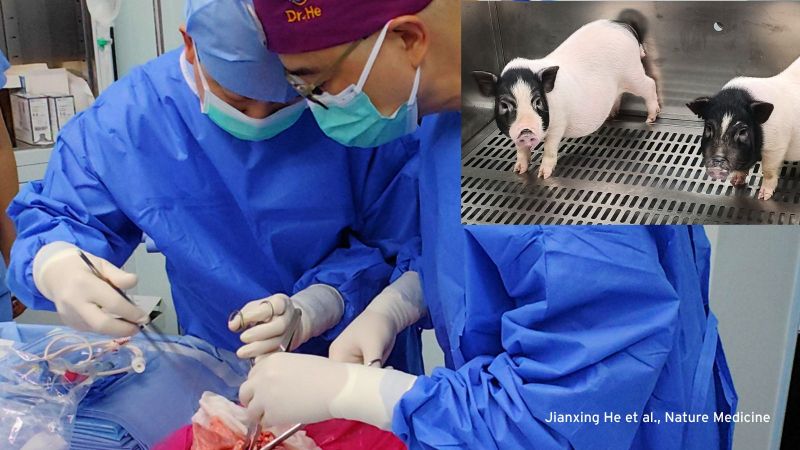
Image left: Melissa Mattola-Kiatos, RN, Nursing Practice Specialist, removes the pig kidney from its box to prepare for transplantation © MASSACHUSETTS GENERAL HOSPITAL
For many years, scientists have been trying to create animals whose organs could be used for transplant operations, to help compensate for the persistent shortage of suitable human organs. This is because we just don’t have enough of the human kind. The demand for organs outpaces supply every year, despite the generosity of donors. In 2023-24, for example, there were 4,651 transplants facilitated by NHS Blood and Transplant, and yet more than 415 people died while waiting for an organ.
The scientific search for animal organ substitutes has been fraught with difficulty as each attempt revealed a new level of complexity and a new family of problems that needed to be solved. Some have suggested that the obstacles are so great that we should simply abandon the attempt altogether and direct our energies towards increasing the number of people on the organ donor register instead. After all, round 45% of the UK public, or 30 million people, are already on the organ donor register meaning that 300,000 potential donors might die every year. This is to serve a transplant list of around 8,000 patients. So what’s the issue? The problem is that it is not the case that the organs of any willing donor can be used after their death. Only 1% of people die in a way which would make their organs suitable for transplant. There is a whole raft of medical, technical, and logistical complexities involved in getting a viable organ into a patient that are not immediately obvious to the untrained eye.
The first and most obvious problem is that many people die from infections, cancers or other diseases that affect the health of their organs. But even when the organs are disease free and healthy, they need to have a constant supply of oxygen right up to the point of their removal if they ae to be successfully transplanted. This means that only the organs of people who die in very particular circumstances –usually in hospital when brain death precedes the end of bodily function or when breathing is stopped under controlled circumstances – are medically suitable.
Even when an ideal organ is found the process involved in getting it to a patient is far from straightforward and the timelines are extremely tight, meaning that not every viable organ makes it. The donor and recipient must have compatible blood and tissue types. Human Leukocyte Antigen (HLA) markers are proteins that sit on the surface of cells, and closer HLA matches between the patient and the donor (especially for kidneys, which are one of the most-needed organs) reduce the risk of rejection. Perfect matches are rare, but partial matches can still work with immunity suppression medications. The organ must also be the right size to fit the recipient's body cavity and circulatory system. This is especially important for lungs, heart, and liver. It is easy to underestimate the sheer amount of plumbing that needs to be done to fit the organ into this bodily ecosystem.
Once matched, the organ needs to get to the patient or vice-versa. The patient needs to be prepped for surgery and a surgical team assembled that can commit to what is usually several hours of surgery, in a vacant and equipped surgical theatre. Typical surgery times are:
|
Organ |
Typical Surgery Time |
|
Kidney |
2–4 hours |
|
Liver |
6–12 hours |
|
Heart |
4–6 hours |
|
Lung (single) |
4–6 hours |
|
Lung (double) |
6–12 hours |
|
Pancreas |
4–6 hours |
|
Intestines |
6–10 hours |
Meanwhile, the clock is ticking on organ viability from the moment the donor dies. The organs are placed on ice to slow the degradation of cells but, even given this, typical survival times are:
|
Organ |
Usable Time Outside the Body |
|
Heart |
4–6 hours |
|
Lungs |
4–6 hours |
|
Liver |
8–12 hours |
|
Pancreas |
12–24 hours |
|
Kidneys |
24–36 hours |
|
Intestines |
~6–10 hours |
You could easily have a heart, for instance, that needs to be inside the recipient five hours after it was placed on ice having been removed from the donor, assuming nothing goes wrong during removal.
It is extraordinary that blood and transplant services are able to deliver this to the extent that they do but, with demand rising, we need a way to make this even a bit less complicated.
The three most viable options are artificial (mechanical) organs, lab-grown organs, or organs transplanted from animals.
Mechanical organs (especially mechanical support devices such as heart pumps or dialysis machines) are currently widely used, but are best seen as a bridge to transplant. 3-D bioprinting can sometimes sidestep immunity issues if based on the patients’ own cells ) but not always, and full-function bioengineered organs (such as kidneys or livers) are not yet viable for human use. Any mechanical parts can wear down and need replacing and represent an ever-growing risk to the patient as the unit degrades.
Lab grown organs have shown promise. In one example, researchers at the University of Edinburgh took cells called fibroblasts from a mouse embryo and converted them directly into a completely unrelated type of cell – specialised thymus cells – using a technique called reprogramming. When mixed with other thymus cell types and transplanted into mice, these cells formed a replacement organ that had the same structure, complexity and function as a healthy native adult thymus.
However, scaling this process to more complex organs such as the kidneys has met with limited success. While lab-grown tissues are already in use in human patients and simple tissue structures such as windpipes have had partial success, the available lab-grown “organoids” can’t mimic the complexity of a full organ. The major obstacles are creating blood vessels to nourish the organ (vascularisation) , replicating complex organ functions at a human scale, and suppressing immune response (even a patient’s own cells can trigger an immune response).
With animal organs, immune rejection would still be a major risk and there’s a small, but not zero, risk of infection from zoonotic viruses (for example, porcine retroviruses), but the issues are likely to be much more manageable. That is why the research continues. The potential prize in terms of human health is huge.
The best solution will always be to minimise the number of people needing transplants in the first place, and this will become ever easier with technologies such medical health tracking devices and closed-loop insulin delivery systems for diabetics. Transplants are also lasting longer due to improved drugs, better matching and improved surgical techniques which goes some way towards reducing demand..
However, the supply issue will remain and naturally scales to the population. The greater the population, the greater the need.
Work in animals is thus vital to at least two of the three main ways forward with this issue, and will remain so for the foreseeable future.
Last edited: 29 July 2025 10:38





